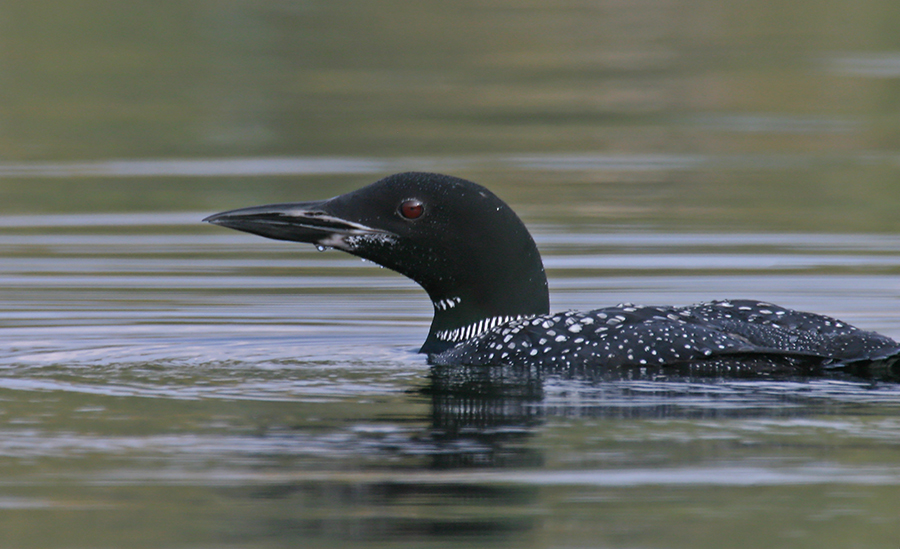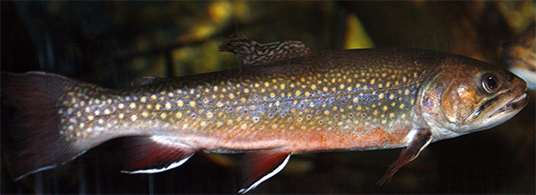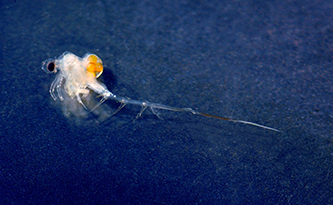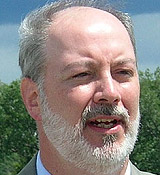
Adirondack Research Forum Offers Fascinating View of Current Science - Part 2
Monday, March 21, 2016
By: John F. Sheehan - Adirondack Council Communications Director
This is the second part in a two-part series. Click HERE to read part one.
I had the privilege of participating in the 2016 Adirondack Research Forum at the Adirondack League Club in early March. There was much to discuss at the forum, as research scientists came from as far away as Oregon and Ohio to explain their work and hear about their colleagues’ studies.
Here are a few of the highlights from the forum.
Rory Keating of the Biodiversity Research Institute (BRI), Portland, ME - bit.ly/25gsjvJ
Studying loon behavior using motion-activated trail cameras.
The BRI took 65,000 photos of loons nesting over the past three years. The conclusions so far are that loons have a tough life.
Loons have great difficulty moving on land, so they build their nests very close to the water. Other water birds, predators, water levels changes, and interactions with humans can quickly destroy the viability of a nest. People in any water crafts should be very  careful on the shores where loons nest.
careful on the shores where loons nest.
The BRI filmed 19 successful nests and 17 failed nest. Reasons for the failed nest include: five nests were flooded out by dramatic water level increases, three succumbed to predators and two were abandoned when they were disturbed. Photos showed that loons don’t get along with mergansers or geese, but coexist just fine with herons, beavers and deer.
Spencer Bruce of the University of Albany
Studying genetic diversity among brook trout.
Dix Pond in Essex County is a “heritage pond,” one of 11 that appear to have been unaltered by humans since people first arrived in North America. Heritage ponds have no development on them and their watersheds have not been logged nor do they contain roads. These ponds are also buffered by alkaline soils, so acid rain has not harmed their aquatic life.
 Dix Pond is the headwater to Elk Lake and both have precisely the same genetic brook trout, as do all of the streams between them. These brook trout are very healthy and show high genetic diversity, an indication that they have had excellent reproductive success and survival rates.
Dix Pond is the headwater to Elk Lake and both have precisely the same genetic brook trout, as do all of the streams between them. These brook trout are very healthy and show high genetic diversity, an indication that they have had excellent reproductive success and survival rates.
Spencer also studied 26 stocked ponds in the western Adirondack Park, and genetic tests showed both native and stocked fish were present. Honnedaga Lake brook trout are the most genetically unique of those studied so far and Dix was second.
Kevin Rose, Rensselaer Polytechnic Institute, Troy, NY
Studying changes in water clarity and how they are affected by climate change.
Water clarity and temperature are important for many reasons. For example, trout survive best in clear, cold waters. Kevin found that clear lakes warm faster than cloudy/murky lakes because sunlight can more deeply penetrate the water and warm the bottom layer, which doesn’t happen in browner water.
Climate warming can also bring decreased clarity by facilitating algae and plant growth, while wetter weather and increased flooding cause runoff to carry eroded soil to rivers and lakes, muddying them. While murkiness can slow warming of the water, it can also lead oxygen loss at the lower levels, which can kill fish and plants.
The length of time each year that an Adirondack lake is covered by ice also affects its temperature and clarity. Mirror Lake’s winter ice cover declined by an average of seven days between 1905 and 2005 and Lake George’s ice cover declined by an average of five days during the same period.
Taylor Leach of the University of Miami in Ohio
Studying the use of acoustical equipment to track zooplankton in Adirondack lakes.
Zooplankton species are among the smallest aquatic creatures in the Adirondacks and are the foundation of the Park’s aquatic food chain. Their health and abundance are indicators of overall lake vitality.
 Spiny Water Flea
Spiny Water Flea
Taylor is an Old Forge native who is has come home to do these studies. She is using a highly tuned fish-finder/sonar unit to better understand their movements, behavior and life cycles. This research could facilitate studies of, for example, how invasive species such as Spiny Water Flea affect native zooplankton by competing with them.
Curt Stager of Paul Smith’s College - http://www.paulsmiths.edu/
Curt was not a speaker, but I had lunch with him and Colin Beier, a presenter from SUNY College of Environmental Science and Forestry. They discussed their desire for a new study at Wolf Pond, a “heritage pond” located in SUNY-ESF’s Huntington Forest in Newcomb that had an intense algae bloom all of last summer. No one knows why this bloom occurred.
Algae blooms are normally associated with excessive nutrients flowing into the water from soils disturbed by development, logging, farming, pollution or from faulty septic systems or inadequately treated sewage. None of those is present at Wolf Pond, which makes it curious why such an algae bloom occurred and why a study is needed.
The Adirondack Council is thankful for being invited to this research forum and for all of those scientists who have and still are researching the Adirondack Park’s water, wilderness and wildlife. This research provides the Adirondack Council and policymakers with the necessary information to make science-based decisions to better protect the Park for future generations to enjoy.
|
|||





